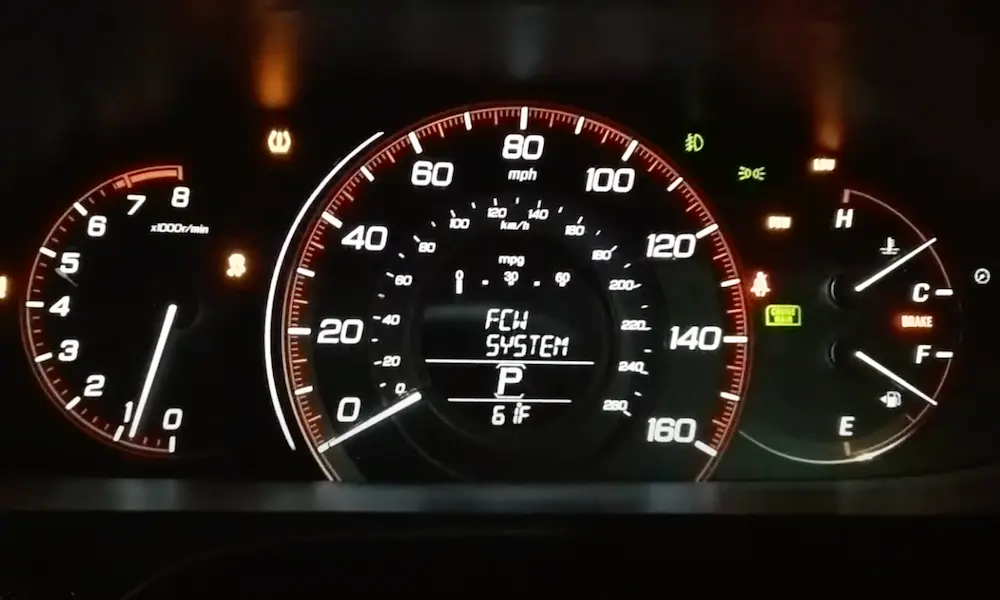Is your Dodge Ram’s fuel gauge giving you incorrect readings? Maybe it’s stuck on empty despite a full tank, or never quite reaches “F” even after filling up. You’re looking at a common issue that many Ram owners face, but the good news is that most fuel gauge problems can be resolved with the right reset procedure.
This guide covers everything you need to know about resetting your Dodge Ram’s fuel gauge across different model years, from simple DIY dashboard resets to more complex calibration methods.
Understanding Dodge Ram Fuel Gauge Systems
Before diving into reset procedures, it helps to understand how your Ram’s fuel gauge actually works.
Dodge Ram trucks use different fuel gauge systems depending on the model year:
- 2000-2009 models: These use relatively simple analog systems with mechanical float arms in the fuel tank that measure resistance to show fuel level
- 2010-present models: These feature more sophisticated digital systems integrated with the vehicle’s computer network
The primary components in any Ram fuel gauge system include:
- Fuel sending unit (located in the fuel tank)
- Wiring harness connecting the sending unit to the instrument cluster
- The instrument cluster gauge itself
- Vehicle computer systems that interpret the readings
When one of these components fails or loses calibration, you’ll see inaccurate fuel readings.
Common Dodge Ram Fuel Gauge Problems
If you’re experiencing fuel gauge issues, your problem likely falls into one of these common categories:
Gauge Reading Empty Despite Fuel in Tank
This frequently happens about 20 miles after filling up, often accompanied by warning messages like “Fuel Level Sensor Fail” on your information display. Your check engine light might also illuminate.
Gauge Never Reaching Full
Many fifth-generation Ram owners report their gauges stopping at approximately 7/8 full, never actually reaching the “F” mark despite a complete fill-up. This is typically a calibration issue rather than a complete sensor failure.
Erratic Gauge Behavior After Battery Service
Disconnecting or replacing your battery can disrupt your fuel gauge calibration. The vehicle’s electrical system often requires a specific reset sequence to properly recalibrate after any power interruption.
Inaccurate Readings After Parts Replacement
Installing aftermarket fuel pumps or sending units often leads to permanent gauge inaccuracy if not properly calibrated before installation.
Basic Reset Procedure for 2000-2009 Dodge Ram Models
If you own an early to mid-2000s Ram truck, try this dashboard reset method first:
For 2004 Dodge Ram 1500 (and similar years):
- Do not start the engine
- Hold down the tachometer button
- While holding the button, turn the ignition to the “on” position
- Continue holding until gauge needles sweep through their ranges
- Wait for diagnostic code “CC00” to display
- Release the button
- Turn ignition off
- Restart your truck to check if the fuel gauge now reads correctly
For 2003-2009 Ram models:
- Locate the trip odometer button
- Press and hold this button
- While holding, turn the key to the “on” position (don’t start the engine)
- Keep holding until all gauges sweep through a complete cycle
- Release the button when gauges return to their calibrated positions
- Turn the ignition off
- Start the engine to verify proper fuel gauge operation
This reset method works on numerous Chrysler, Dodge, and Jeep vehicles from the same era that share similar electrical architecture.
Reset Procedures for 2010-Present Dodge Ram Models
Newer Ram trucks require different approaches due to their more complex systems:
For 2010-2016 Models:
- Start with the vehicle off
- Press and hold the trip/reset button on the instrument cluster
- While continuing to hold the button, turn the ignition to the “on” position
- Hold until the gauges perform a full sweep
- If that doesn’t work, try disconnecting the negative battery cable for 10-15 minutes, then reconnect
For 2017-Present Models:
Newer Rams, especially those with the 32-gallon tanks, may require dealer intervention with specialized diagnostic equipment to properly recalibrate the fuel monitoring system.
Some 2017 Ram 1500 models have an available dealer service update that includes fuel tank recalibration, often bundled with other feature improvements like Auto-Park functionality.
| Model Year | Reset Method | Success Rate | Notes |
|---|---|---|---|
| 2000-2009 | Dashboard button sequence | High | Works without special tools |
| 2010-2016 | Trip button + ignition method | Moderate | May require battery disconnect |
| 2017-Present | Dealer recalibration | High | Often requires dealership visit |
Advanced Troubleshooting: When Basic Resets Fail
If the standard reset procedures don’t solve your fuel gauge problems, you might be facing a more serious issue:
Testing the Fuel Sending Unit
You can test if your sending unit is functioning correctly:
- Locate the fuel pump/sending unit connector (usually under the bed or inside the cab)
- Use a multimeter set to ohms
- Test the resistance between the appropriate pins
- Compare readings to specifications (typically 240 ohms when full to around 33 ohms when empty)
- If readings are outside specifications, your sending unit likely needs replacement
Instrument Cluster Issues
Sometimes the problem isn’t with the sending unit but with the gauge itself:
- Check for other gauge malfunctions in your instrument cluster
- Look for dim or flickering displays
- If multiple gauges show problems, the instrument cluster might need repair or replacement
Wiring and Connection Problems
Electrical issues can also cause fuel gauge problems:
- Inspect the wiring harness for damage, especially near the fuel tank
- Check for loose or corroded connections
- Look for signs of water intrusion or physical damage
- Test continuity of wiring using a multimeter
Professional Calibration Methods
For persistent issues, professional calibration methods may be necessary:
Dealer Diagnostics
Dealership technicians have access to:
- Manufacturer-specific diagnostic equipment
- Software updates that can resolve calibration issues
- Technical service bulletins with model-specific fixes
For 2017 Ram 1500 trucks with the 32-gallon fuel tank, an official recalibration procedure is available through dealers, which has improved accuracy for many owners.
Sending Unit Bench Calibration
When installing a new sending unit:
- Professionals can bench test the unit before installation
- The float arm may need adjustment to ensure proper resistance readings
- Calibration ensures the unit provides accurate resistance values corresponding to actual fuel levels
Preventing Future Fuel Gauge Problems
To avoid facing this issue again:
- When replacing your battery, use a memory saver device to maintain power to vehicle computers
- If disconnecting the battery is necessary, be prepared to perform a gauge reset afterward
- Use OEM or high-quality replacement parts for fuel system repairs
- Keep records of any calibration procedures performed
When to Seek Professional Help
While many fuel gauge issues can be resolved with DIY methods, certain situations call for professional assistance:
- Persistent problems after trying multiple reset procedures
- Fuel gauge issues accompanied by multiple warning lights
- Problems that developed after major repairs
- Newer models (2017+) with digital gauge systems
Local dealerships or specialized automotive electronics shops can provide more advanced solutions, including instrument cluster recalibration or computer reprogramming.














